Anthem M1 Mono
4,612.00€
Anthem M1 Mono

Anthem M1 Mono
Διαθέσιμο κατόπιν παραγγελίας
Περιγραφή
Anthem M1 Mono

Anthem M1 Mono
Μονοφωνικός ενισχυτής
Υψηλότατη ποιότητα ήχου σε όλα τα επίπεδα έντασης, επίπεδη απόκριση συχνότητας σε οποιοδήποτε φορτίο και σταθερή στα πιο δύσκολα φορτία. Το Statement M1 είναι ένας υπερσύγχρονος μονοφωνικός ενισχυτής που παρέχει 1.000 Watt σε 8 Ohm και 2.000 Watt σε 4 Ohm ή λιγότερο, με το THD να παραμένει κάτω από 0,1% από 20 Hz έως 20 kHz. Σχεδιασμένο και κατασκευασμένο στο προηγμένο ερευνητικό μας κέντρο στην Οττάβα του Καναδά, το M1 κατασκευάζεται στις εγκαταστάσεις μας στο Τορόντο.
Περισσότερο από μια λεπτή, τεχνολογικά προηγμένη μονοφωνική σχεδίαση, η M1 αποδεικνύει ότι η αρχιτεκτονική της κλάσης D δεν είναι θεμελιωδώς ελαττωματική, απλά δεν έχει εφαρμοστεί καλά στο παρελθόν, κυρίως επειδή απαιτούσε μια τόσο μεγάλη δέσμευση στην Ε&Α. Είμαστε τυχεροί που έχουμε τους εσωτερικούς πόρους για να δημιουργήσουμε ένα τόσο πρωτοποριακό προϊόν και μια ακρόαση θα αποκαλύψει την πραγματικά εξαιρετική φύση αυτού του ενισχυτή.
Anthem M1 Mono
State-of-the-Art Monaural Amplifier
The highest sound quality at all volume levels, flat frequency response into any load, and stable into the most difficult loads. The Statement M1 is a state-of-the-art monaural amplifier delivering 1,000 watts into 8 ohms and 2,000 watts into 4 ohms or less with THD remaining under 0.1% from 20 Hz to 20 kHz. Designed and engineered in our advanced research center in Ottawa, Canada, the M1 is manufactured in our Toronto facility.
More than just a slim, technologically advanced monaural design, the M1 demonstrates that Class D architecture isn’t fundamentally flawed, it simply hasn’t been implemented well in the past, mainly because it required such a heavy commitment to R&D. We’re fortunate to have the in-house resources to create such a groundbreaking product and one listen will reveal the truly extraordinary nature of this amplifier.
Cutting Edge Technology & Design
Full resolution of all of the sonic subtleties and complexities in the input signal.
Accurate reproduction of the full dynamic range of the signal.
Output stage is never allowed to clip.
No compression as output increases.
Flat frequency response into any load, without having to resort to digital conversion or equalization to compensate.
Stable into all loads including open circuit and short circuit.
A low noise floor.
Exceptional efficiency with low heat output.
An amp so mechanically silent it will suit even the quietest listening room.
A design that allows multiple units to be stacked with no danger of overheating.
All of the above delivered at a price point that while not inexpensive, delivers virtually limitless dynamic fidelity.
FACT!
At 4 ohms (which is where high-end speakers hang around) our award-winning Statement P5 amplifier outputs 500W. With 2 kW the M1 outperforms it by 6dB. That’s quite an advantage.
Best Value in the Market
The M1 enjoys all of the attributes of our award-winning Statement Class AB amplifiers but through exclusive Anthem technologies, goes far beyond the current capabilities of Class A, Class AB and prior Class D amplifiers in the market.
The proprietary design employs all of the advantages of a Class D amplifier — high output, high efficiency, compact size — while avoiding the typical Class D limitations such as difficulty driving low-impedance (high-end) speakers, power line contamination, reliability issues and substandard audio quality. The absence of accurate dynamics is so common that it frequently goes unnoticed, but through the M1, music and movies are delivered with breathtaking realism.
POWER!
2,400W into 3 ohms
2,000W into 4 ohms
1,000W into 8 ohms
* These figures are continuous from 20 Hz to 20 kHz at less than 0.1% THD+N. The M1 can deliver 2 kW continuously when fed by 240V mains and 2 kW for several seconds when fed by a dedicated 120V 15A line.
Addressing the Class D bias
The “D” in Class D does not stand for digital. It was simply the fourth type of amp recognized and classified by the IEEE. The first was Class A, the second Class B, the third Class C, etc.
Contrary to the bias that exists among high-end enthusiasts and across the industry in general, the Class D design is not inherently flawed. The truth is that no existing designs have been able to reach the Class D’s inherent potential for performance. It is not the technology that yields fine audio performance but rather the implementation of the technology. At Anthem, we agree that most Class D amplifiers are poor performers. However the M1 uses Class D amplification of a different ilk (see later section on Class D for a full discussion).
The M1 is not a digital amp!
There are no A/D or D/A converters in the signal path. The amplifier’s control system continuously varies the width of the output pulse train in direct relation to the analog input signal. In essence, a side-to-side variation in width is analogous to a signal’s more familiar up-and-down amplitude variation, not at all the same as a digital string of 1s and 0s where all pulses have the same width.
Exceptional efficiency
Much has been written about Class D amps having twice the efficiency of conventional amplifiers at full output, but there’s more to this. Under normal conditions an amplifier operates at only a fraction of its full output capability. At 1/8th of its maximum output (the typical working level of an amplifier), our M1 is six times more efficient than a conventional amplifier.
Slim Size, Beefy Power!
Never judge an amp by its size or its rack space
Amplifiers are often judged by their size and weight, the beefier the better since more power requires a physically heavier, larger amplifier. Or does it? It all depends on the design. When rack-mounted, the 20-kb M1 occupies only one rack space but despite its size can deliver 1,000W into 8 ohms and 2,000W into 4 ohms.
Cool running
The M1’s cooling system quickly and efficiently moves heat from the interior of the amplifier to exterior heat sinks. Sealed copper pipes within the amp contain a small amount of special fluid held under a vacuum. When the temperature at one end of the pipe rises — the end adjacent to the amplifier’s heat sources — the fluid in that end evaporates. This vapor is then naturally drawn to the cooler end of the pipe, along the heat sink on the side of the amp’s chassis where it condenses. From there a copper wick returns the fluid to the hotter end of the pipe. This heat transfer process is many thousands of times faster and more efficient than cooling through metal heat sinks alone. This system eliminates the need for fans, allowing multiple M1s to be stacked with no danger of overheating. It also means the amplifier is so mechanically quiet it will suit even the quietest listening rooms.
No noise is good news
With an absence of noisy fans and a noise floor well below that of a high-end preamplifier, the M1 is a critical listener’s dream.
Advanced Load Monitoring & Power Factor Correction
Proprietary Load Monitoring
The M1 has a very sophisticated load monitoring system. Two 100A Hall-Effect sensors monitor the output current. A Digital Signal Processor, outside the signal path, is used for power sequencing and to monitor various amplifier and power supply functions including line voltage, output current, ground fault detection, temperature and DC voltage at the output.
The M1’s output stage does not interact with the load. A hysteric PID controller which uses past, present and a predicted future to make adjustments keeps the amp load independent. Hundreds of computer simulations were used to test and optimize this system so that it is able to handle all possible loads. This is a significant design achievement. Whether you are running the M1 from a 120V circuit or a 240V circuit, the amplifier will be delivering the highest output possible according to the operating conditions.
Left: Power supply without PFC. Current flows in short bursts and ends up much higher than it needs to be, limiting available power and increasing the chance of tripping a breaker.
Right: Power supply with PFC. The voltage and current waveforms are sinusoidal and in-phase.
Power Factor Correction
Power Factor Correction (PFC) maximizes available power and at the same time reduces (by a large amount!) the noise put on the AC line. Without PFC, the input current can flow and charge the capacitors only during the short moments that voltage is at or very close to its positive or negative peak. Since power is the product of both voltage and current it is produced only when both are present. Power Factor Correction marries the voltage and current cycles enabling continuous output from the power supply through the entire AC cycle. In doing so, the load appears almost purely resistive to the AC source. (See diagrams to right)
The special advantages of bridged mode amplification in the M1
Lower voltage MOSFETs can be used for lower resistance and higher speed. Although more expensive since more MOSFETs are needed, sound quality is vastly improved.
Because the load is balanced, output current goes from one rail to the other without disturbing the ground plane. A balanced load also provides more efficient use of the power supply. Rail voltage is stable, unlike in single-ended Class D amps which suffer from rail pumping at low frequency and high power.
Power supply capacitors become more efficient because bridging doubles the ripple frequency while impedance and ripple voltage are halved, allowing the power supply capacitors to be more efficient.
For a high-power amp such as the M1, bridging can be safer. The differential output voltage can reach over 90 Vrms but at this level each output terminal is only 45 Vrms with respect to the chassis.
Additional high-end touches
Hand-designed 4-layer FR4-rated glass-epoxy circuit board with 2-ounce copper traces promotes exceptional conductivity.
Extensive use of power and ground planes ensures vanishingly low levels of noise and inductance to produce an amp that gets out of the way, leaving only the sound of the music.
Each of the eight 65-amp MOSFETs can handle a peak current of 260 amperes, has low gate charge for fast response, low channel resistance for high efficiency and high speed for high efficiency and low distortion.
No relays are used in the signal path preventing any possibility of relay failure.
Why doesn’t the M1’s power cord have a third prong?
Although more difficult and expensive to implement, Anthem has always used 2-prong AC cords to make installation easier.
A 3-prong cord is prone to ground loops if the system includes other 3-prong equipment or cable/satellite TV. For example: If the preamplifier uses three prongs it is grounded not only through its power cord but also through any non-optical connections to other 3-prong components. This can result in humming or buzzing through the speakers as well as video noise problems. The more elaborate the system, the greater the chance of a ground loop. With 3-prong equipment, balanced XLR interconnection is needed throughout and that type of interconnection is not always possible.
With a 2-prong cord, safety is maintained through either double or reinforced insulation. The next time you see a corded power tool, look for the double-square symbol. It requires more expensive wires on the live side and greater distance between live circuits and isolated circuits and chassis. The distance requirement also applies to spacing inside transformers, making them larger and more expensive. A 2-prong cord also requires a larger line filter because according to safety standards the line-chassis leakage current limit is ten times lower compared to 3-prong. Ironically, a higher leakage current allowance aggravates hum problems in 3-prong systems.
To clear up any final misconceptions, the earth ground provided by the third prong is not meant as a shield, it is a safety measure meant to trip breakers should a chassis become live as a result of coming into contact with a live wire.
Not all Class D amplifiers are created equal!
In the audio press and across the Internet many generalizations have been made about deficiencies in Class D amplifier design. While such generalizations may hold true for other brands of amplifiers, below, Anthem responds to each one as it relates to our M1.
Generalizations:
The odds are stacked against the Class D amp designer.
The M1 Response:
There’s nothing like a challenge to get Anthem designers and engineers working far into the night!
Class D amps have high radio-frequency emissions.
Emissions are well within EMC Class B requirements. Class B requirements apply to residential use and are far stricter than Class A requirements.
Frequency response is affected by input circuits that are highly sensitive to stray high frequency signals.
Frequency response in the M1 is +/- 0.1 dB from 20 Hz to 20 kHz and -3 dB at 45 kHz, well beyond the limit of audibility.
Frequency response is affected due to feedback not accounting for effects of the output filter.
Feedback is after the output filter, thus already taken into account.
Class D amps use circuits with poor high-frequency resolution resulting in high intermodulation distortion.
Neither of the above are an issue in the M1. Its high-speed control loop includes high-speed instrumentation-grade op-amps with 100 MHz unity gain bandwidth, 3000V/µs slew rate, high-speed complementary comparators and 5-nanosecond Advanced CMOS Logic gates.
Class D amps negatively affect dynamic variations in clarity and focus.
In unbiased double-blind listening tests comparing the M1 with renowned audiophile class AB amps, we proved the M1 provides consistent audiophile sound with unhampered clarity and focus.
High-feedback switch-mode power supplies react dynamically causing power draw variations and encouraging cross-modulation.
With the M1, it’s exactly the opposite situation because a linear supply cannot regulate the output voltage of the output stage. The bus capacitors in the M1’s output stage are replenished 200,000 times per second instead of 100 or 120 times per second as is the case with linear power supplies.
Class D amps suffer from shaped noise floors which vary dynamically according to signal level.
The M1’s noise floor is virtually inaudible.
Class D cannot resolve detail very well. 1-bit DSD pulse width modulation used by SACD operates at over 2.8 MHz which is seven times the rate used by the typical Class D amplifier.
DSD is not pulse width modulation. It is pulse density modulation which is digital, meaning discrete in time. Its time resolution is limited to around 350 nanoseconds. The M1 operates at 0.4 MHz but the time resolution is analog meaning there is no inherent limit on time resolution (though practically speaking it is around 4 nanoseconds). This is 87.5 times better than SACD. Since the output stage runs at seven times lower frequency than DSD one could argue that the actual resolution is that much lower, but even then it’s 12.5 times better than SACD. In any case, the M1’s time resolution is well below noise floor limits and theoretical arguments are a wash when compared to the actual listening test results done in real world setups.
With several designs high DC potential is present on the outputs.
The M1’s outputs idle at ground potential (0V).
A dynamic range compressor is often present to provide soft clipping and this may impair clarity.
The M1 does not use a compressor and its output stage is never allowed to clip.
Class D amplifiers suffer from ‘dead time,’ an ugly form of crossover distortion.
The M1 has no audible effects caused by ‘dead time’ and there is never any overlap to cause electrical problems. Timing is controlled by high-speed Advanced CMOS Logic gates with 5-nanosecond propagation delay and sub-nanosecond skew. The MOSFET gates are well controlled, driven by 9-ampere high-speed MOSFET drivers.
Class D output stages have thermal dissipation issues due to the small size of the power module.
The M1 does not use a module. Operation is discrete with output MOSFETs mounted on a copper clad PCB, then on a heavy aluminum extrusion with heat pipes.
Output stages are fragile. Current limiting with a time and frequency dependent envelope is used to protect them, possibly making sound quality near full output variable and load-dependent.
With its eight 65-ampere MOSFETs (260A peak) the M1’s output stage is not fragile and if there is an over-current condition it simply shuts down.
Stability is conditional and several designs can oscillate when under no load, eventually burning out.
The M1 is stable into any load. Purely capacitive and very capacitive loads will send the M1 into protection mode, not burn out mode but since no speakers are purely capacitive this will never be an issue. Unlike other Class D amps, the M1 is perfectly stable into an open circuit and operates perfectly into a short circuit until the current limit is reached. When it is, the M1 will simply shut down and resume playing a few seconds later.
Anthem M1 Mono Specifications
Power Output continuous, 20 Hz to 20 kHz, <0.1% THD+N
8 Ω 1000 W
4 Ω 2000 W
3 Ω 2400 W
2 Ω >2000 W depending on line voltage regulation
With 120V AC supply the amplifier’s maximum output into impedances 4 Ω and lower, as well as its maximum duration, vary depending on line voltage regulation.
Frequency Response 20 Hz to 20 kHz
Open circuit +/- 0.1 dB
8 Ω +/- 0.1 dB
4 Ω +/- 0.1 dB
2 Ω +/- 0.2 dB
Power Bandwidth 1000 W at 8 Ω 5 Hz to 45 kHz
THD+N at 1 kHz, 8 Ω
1 W 0.01 %
10 W 0.01 %
100 W <0.03 %
1000 W <0.06 %
IMD 19 kHz + 20 kHz, CCIF 0.003%
S/N Ratio ref. 1000 W, IEC-A 113 dB
Voltage Gain 29 dB
Input Sensitivity 100 mV for 1 W output, 3.2 V for 1000 W output (8 Ω)
Input Impedance 10 kΩ (RCA), 20 kΩ (XLR)
Damping Factor 800 to 1400 depending on frequency
XLR Configuration Pin 1: Ground, Pin 2: Positive, Pin 3: Negative
POWER REQUIREMENTS
Consumption in a typical music/theater installation
standby mode, 120V mains <1 W
standby mode, 240V mains <2 W
operate mode, idle 33 W
typical operation 300 W
Where mains voltage is 120V, one dedicated 15A circuit per amplifier is recommended depending on speaker. A 20A circuit is adequate for two amplifiers playing music where speaker impedance is 8 Ω. This product operates from a single phase AC power source that supplies between 108V and 264V at a frequency of 50 or 60 Hz.
DIMENSIONS
Height with feet 2 1/4 inches (5.7 cm)
Height without feet 1 rack unit
Width standard handles 19 1/4 inches (49 cm)
Width rackmount handles 19 inches (48.3 cm)
Depth 18 3/4 inches (47.6 cm)
Weight (unpacked) 20 lb (9 kg)
Ποσότητα : Τεμάχιο
Δείτε εδώ τα υπόλοιπα προϊόντα μας.
Δείτε προσφορές στο BLOGSPOT μας


ΤΡΟΠΟΙ ΠΑΡΑΔΟΣΗΣ
- Η παράδοση των προϊόντων μετά τη συλλογή τους από την Nexus Acoustics, πραγματοποιείται σε διάστημα 1-3 εργάσιμων ημερών.
- Παραλαβή από την έδρα μας κατόπιν επικοινωνίας.
- Αποστολή με Courier με επιπλέον χρέωση για παραγγελίες έως 100€ & έως 2,00 kg. και δωρεάν για την Ελλάδα σε μεγαλύτερα ποσά και μικρού όγκου δέματα (έως 2,00 kg)
- Οι αποστολές για δυσπρόσιτες περιοχές γίνονται στο πλησιέστερο Γραφείο της συνεργαζόμενης Courier.
- Για ογκώδη αντικείμενα (Ηχεία, Ενισχυτές κλπ) η αποστολή γίνεται με Μεταφορική Εταιρεία κατόπιν συνεννόησης και ανάλογα τον προορισμό.
> Δείτε περισσότερα σχετικά με τις παραδόσεις

ΠΛΗΡΩΜΗ ΜΕ ΔΟΣΕΙΣ
Μέσω τρόπου πληρωμής με Πιστωτικές Κάρτες Visa & Mastercard μπορείτε μέσα στο eshop μας να κάνετε τις αγορές σας με άτοκες δόσεις.
- Απο 0,00€ - 3,000€ πληρωμή σε 3 άτοκες δόσεις
- Απο 3,001€ - 6,000€ πληρωμή σε 6 άτοκες δόσεις
- Απο 6,001€ και πάνω πληρωμή επίσης σε 6 άτοκες δόσεις
Επιπλέον πληροφορίες
| Brand |
ANTHEM |
|---|
Μόνο συνδεδεμένοι πελάτες που έχουν αγοράσει αυτό το προϊόν μπορούν να αφήσουν μία αξιολόγηση.
Σχετικά προϊόντα
GRANDINOTE SHINAI
GRANDINOTE SHINAI
SHINAI MAGNETOSOLID AMPLIFIER a FERRARI among Amplifiers !!
MAGNETOSOLID AMPLIFIERS = Τransistor υλοποιημένα σε σχέδιο λυχνιών Ήχος σαν Single-Ended DHT Triode αλλά με άφθονη δύναμη & χωρίς τα μειονεκτήματα των λυχνιών. Διθυραμβικές κριτικές στον διεθνή τύπο. Σε μια κατηγορία από μόνος του. Μεγαλύτερο damping factor, μεγαλύτερη ζώνη συχνοτήτων, μηδενική ανάδραση. Αξεπέραστη ποιότητα πραγματικά φυσικού ήχου με τρισδιάστατη παρουσία. Με 2 χ 37 Watt RMS σε πληρη Ταξη Α` που ακούγονται σαν 200 Watt !! Οδηγεί άνετα ηχεία 85 db / 4 Ω ! Μοναδική απόδοση με τα ηχεία της GRANDINOTE.

GRANDINOTE SHINAI
JJ ELECTRONICS 828
MELODY ASTRO BLACK 50
MELODY ASTRO BLACK 50
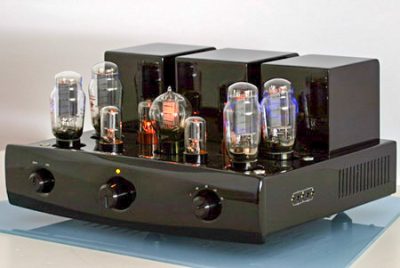
MELODY ASTRO BLACK 50
Ολοκληρωμένος ενισχυτής από την MELODY εξαιρετικής σχεδίασης και ποιότητας κατασκευής. Με 4 χ KT-88 σε τάξη ΑΒ1 αποδίδει 2 χ 50 Watt Ultralinear με μοναδική ποιότητα ήχου Με οδήγηση 2x6SN7 και σταθεροποιημένη τάση τροφοδοσίας από την μοναδική 101D λυχνία Με κορυφαίους μετασχηματιστές έξοδου II C-CORE μεγάλου μεγέθους, κατασκευή hard wired & πυκνωτές έλαιου JENSEN. O Ήχος του είναι ακριβής, φυσικός, με άριστες χροιες και αρμονικές. Η εικόνα είναι τρισδιάστατη και τα μπάσα πλαστικά με άριστη απόσβεση. Τα φωνητικά είναι απολαυστικά με σωστή διαφάνεια και Timing. Το σώμα από τα μπάσα έως τα πρίμα είναι συμπαγές και η ροή της μουσικής με τον αέρα των ηχογραφήσεων εντυπωσιάζουν. Για έμπειρους μουσικόφιλους που αναζητάνε την ακρίβεια στην αναπαραγωγή και την πιστότητα στις χροιές. Oδηγεί άνετα πολλά ηχεία από 86 db/W/m 4~6Ω και πάνω Δέχεται και λυχνίες ΚΤ-120 με αύξηση ισχύος σε 2x60 Watt με μια διαφορετική ποιότητα ήχου & καλύτερη οδήγηση. Με εύκολη ρύθμιση bias εξωτερικά.
MELODY SP-9
MELODY SP-9
MELODY SP-9 KT-88 PP 2 x 50 WATT
Mε 2x50 Watt από 4 x KT-88 σε διάταξη Push-Pull ο ολοκληρωμένος ενισχυτής της MELODY οδηγεί τα περισσότερα ηχεία με άνεση, πολύ δυνατό drive και έλεγχο Mε εξαιρετικούς μετασχηματιστές II-C CORE έξοδου, ξεχωρίζει άνετα σε ποιότητα από τους συνηθισμένους λαμπάτους ενισχυτές, αποδίδοντας άριστες χρείες, μικροδυναμικά, και ανάλυση που συναγωνίζεται τριπλάσιας αξίας προ-τελικούς. Κάθε κύκλωμα έχει τον ήχο και η MELODY διαπρέπει εδώ με τον χαρακτηριστικό της διάφανο και πλούσιο σε αρμόνικες ήχο της, με μηδενικούς θορύβους πεδίου. Με κατασκευή hard-wired, μεγάλα τροφοδοτικά και διακοπτικο ποτενσιόμετρο εισόδου συμπληρώνεται η πολυτελής κατασκευή της MELODY.
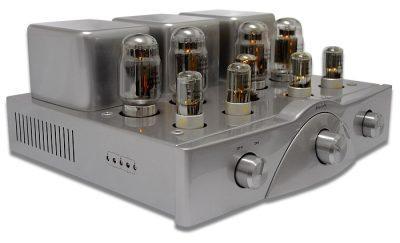
MELODY SP-9
Musical Fidelity M8xi
Musical Fidelity M8xi
Το 1990, η Musical Fidelity δημιούργησε τον πρώτο Super Integrated ενισχυτή: τον A1000. Έτυχε ενθουσιώδους υποδοχής και, ακόμη και σήμερα, σαν μεταχειρισμένος, πωλείται σε υψηλές τιμές. Ο A1000 ήταν ο πρώτος από μια μακρά σειρά Super Integrated ενισχυτών της Musical Fidelity. Τα παιδιά του: τα NuVista M3, Tri Vista 300, kW500, M6/500i, NuVista 800 και NuVista 600 έγιναν δεκτά με εξίσου ενθουσιασμό στον κόσμο των audiophiles. Ο M8xi είναι ο πιο πρόσφατος και ο καλύτερος της νέας σειράς.
Γενική περιγραφή Το M8xi είναι ουσιαστικά 3 μηχανήματα σε ένα κουτί, ξεχωριστός προενισχυτής με δύο μονομπλόκ τελικούς ενισχυτές ισχύος. Η ο προενισχυτής και οι τελικοί έχουν ο καθένας τις δικές του ψύκτρες και τον δικό τους μετασχηματιστή. Ο M8xi είναι μια καθαρή dual mono σχεδίαση. Ο προενισχυτής έχει το δικό του ξεχωριστό τροφοδοτικό και είναι τοποθετημένος κοντά στις υποδοχές εισόδου. Κατά συνέπεια, οι πλακέτες είναι πολύ μικρές και η διαδρομή του σήματος πολύ σύντομη. Αυτή η σχεδίαση διασφαλίζει ότι τα σήματα και των δύο καναλιών έχουν εξαιρετικά χαμηλή σύνθετη αντίσταση τη στιγμή που εισέρχονται στον ενισχυτή. Αυτή είναι μια σημαντική λεπτομέρεια. Κάθε κανάλι έχει δώδεκα μεγάλα bipolar τρανζίστορ - κάτι που εξασφαλίζει 200 αμπέρ ρεύμα κορυφής ανα πάσα στιγμή. Η δουλειά του κουτιού είναι υψηλής ποιότητας ενώ η πρόσοψη του M8xi είναι από αλουμίνιο milspec. Οι ψύκτρες του ενισχυτή έχουν εξαιρετικά χαρακτηριστικά απαγωγής και φινίρισμα και γενικά όλη η κατασκευή του M8xi δίνει μια αίσθηση στιβαρότητας και ποιότητας.

Musical Fidelity M8xi
REGA AETHOS
REGA AETHOS
Ο ολοκληρωμένος ενισχυτής Rega Aethos χρησιμοποιεί τέσσερα τρανζίστορ εξόδου 160 W 16 Amp ανά κανάλι, αποδίδει 156 W ανά κανάλι σε 6 Ω. Ο Aethos είναι dual mono design με toroidal μετασχηματιστή για τα ευαίσθητα στάδια ενίσχυσης και οδήγησης. Το στάδιο του προενισχυτή που είναι σε class-A χρησιμοποιεί discrete κύκλωμα σε όλη την διαδρομή του σήματος. Ο REGA AETHOS είναι ένας ενισχυτής χωρίς συμβιβασμούς με έναν στόχο, να αποδώσει την μουσική όσο πιο πιστά γίνεται. Τα τεχνικά χαρακτηριστικά του ενισχυτή άλλωστε το αποδικνύουν αυτό. Ο Aethos αποδίδει 125 W ανά κανάλι στα 8 Ω (156 W ανά κανάλι στα 6 Ω) είναι όπως είπαμε παραπάνω Dual mono σχέδιο, έχει 5 εισόδους Line, έξοδο Headphone, είναι τηλεχειριζόμενος έχει είσοδο Direct και έχει έξοδο Record out και Pre-amp out.

REGA AETHOS

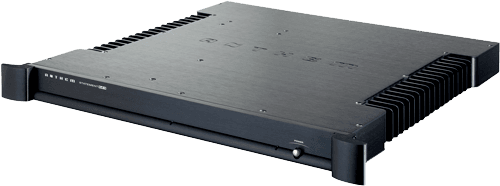
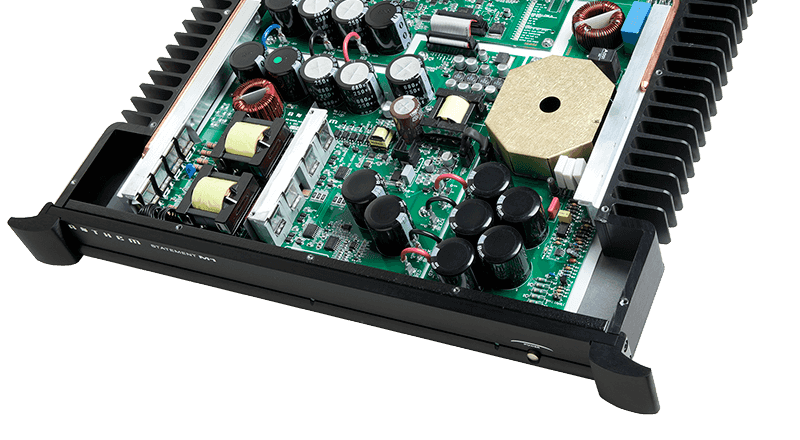


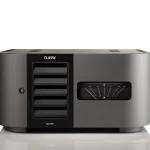
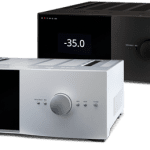

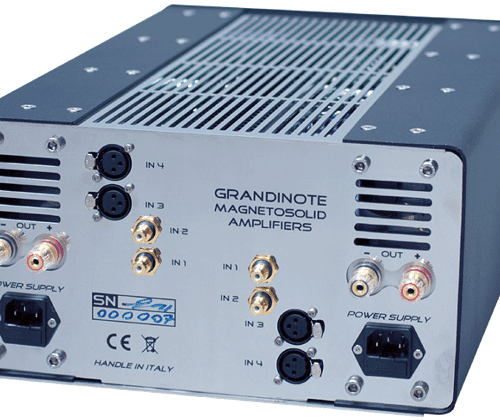
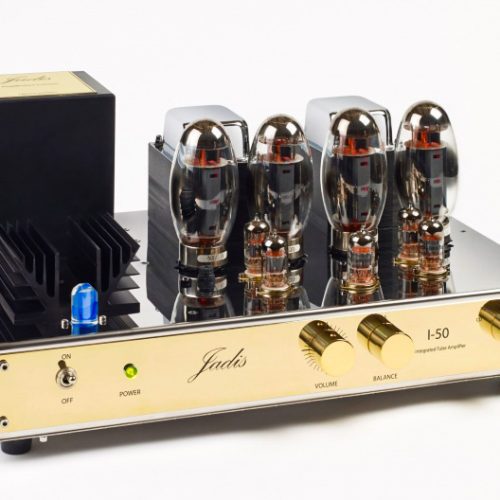
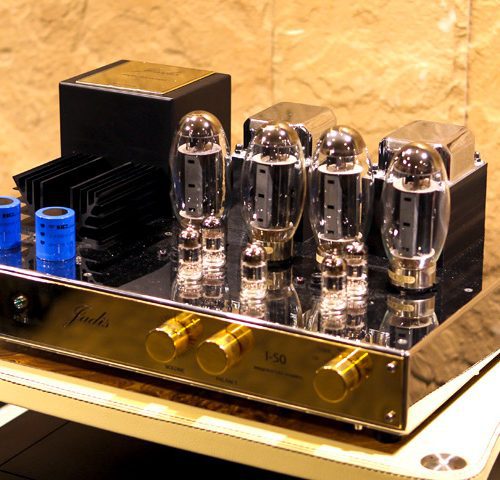
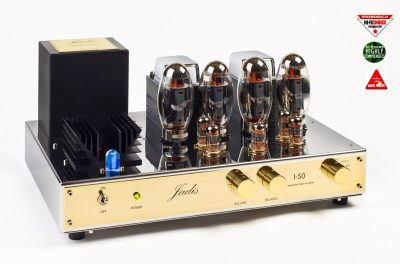
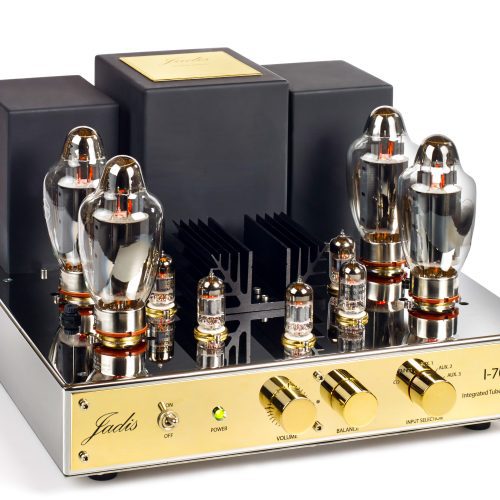


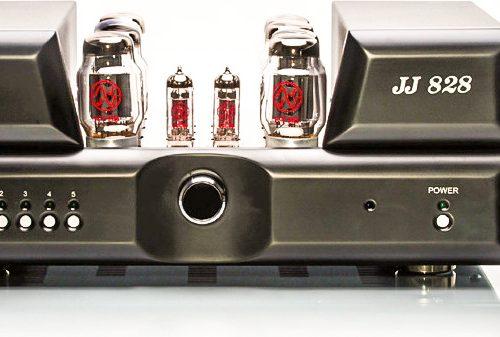

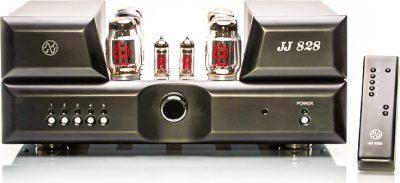
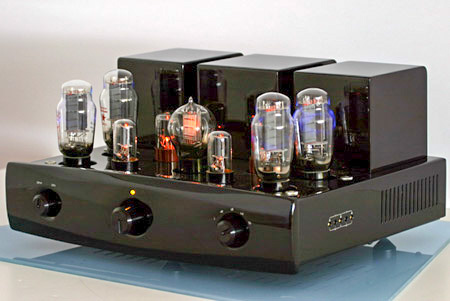
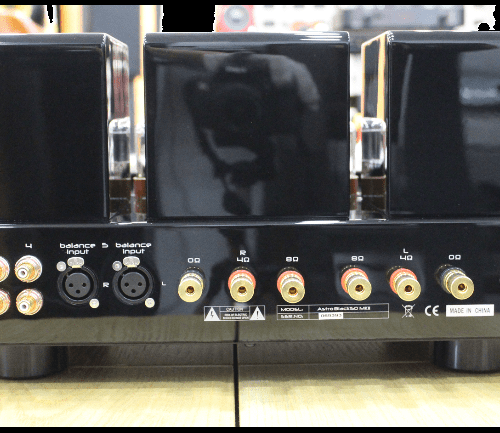
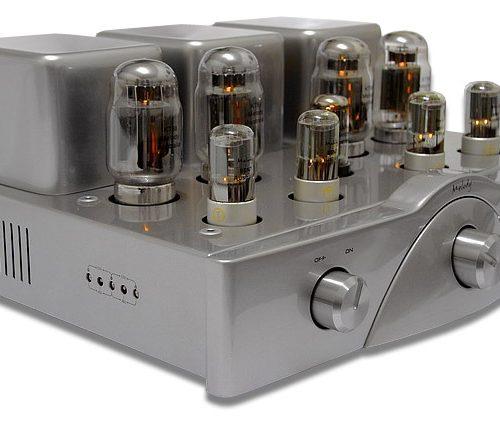

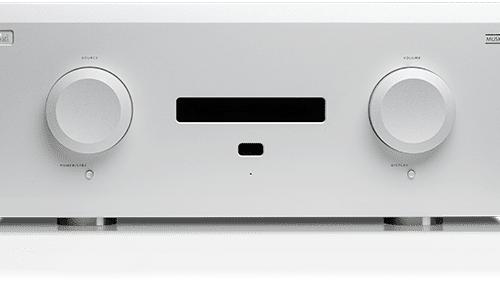
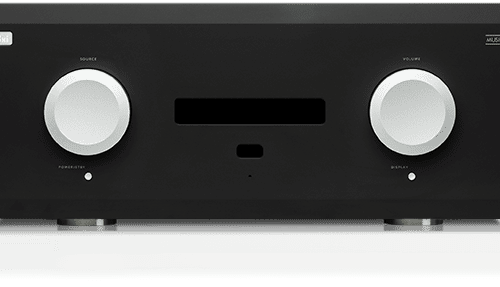
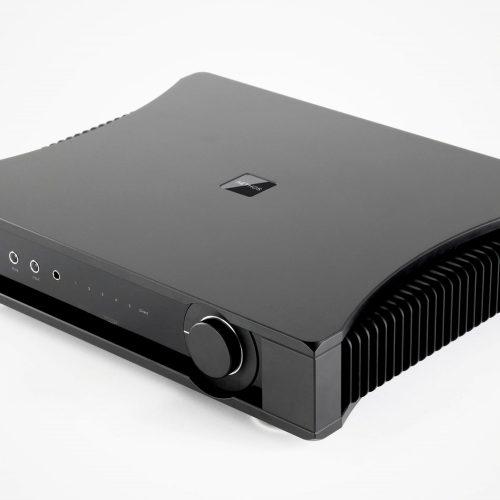

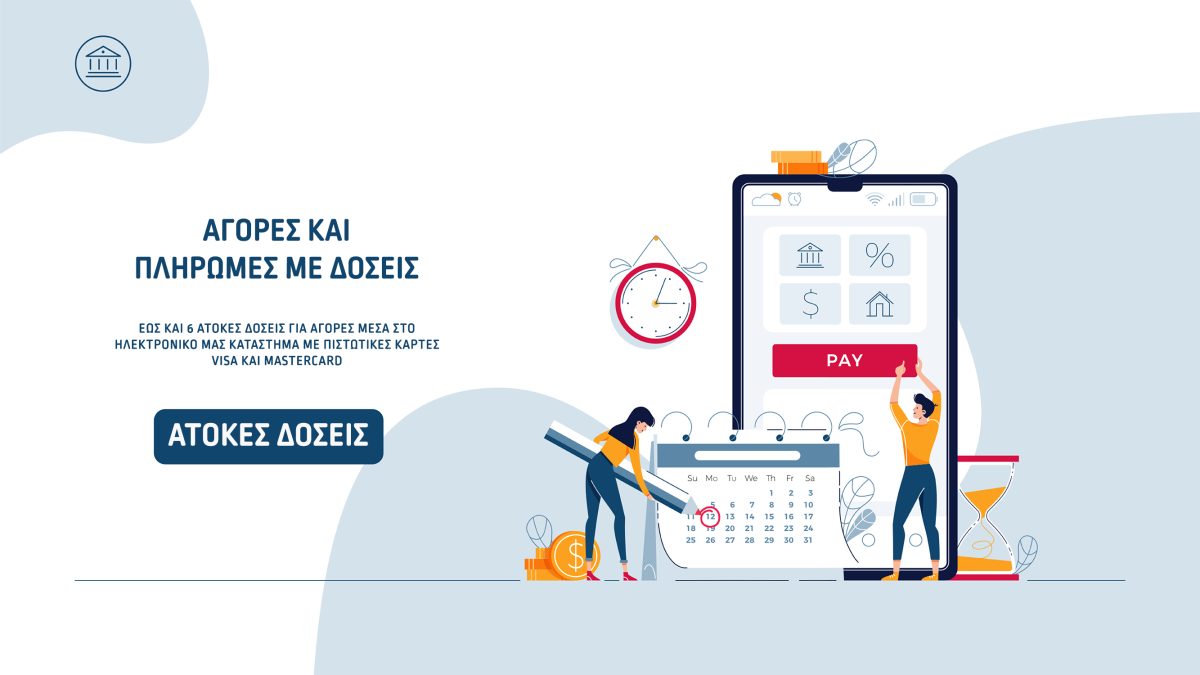
Αξιολογήσεις
Δεν υπάρχει καμία αξιολόγηση ακόμη.